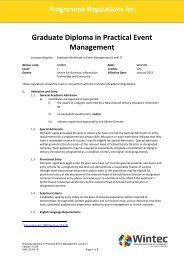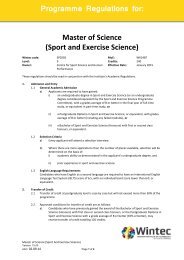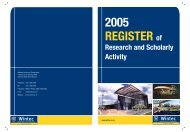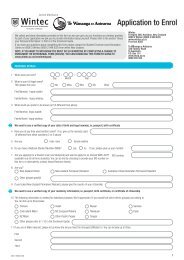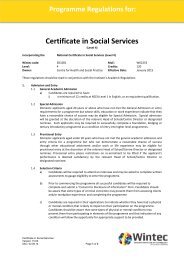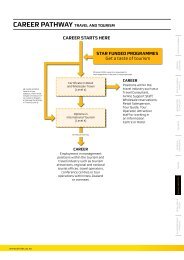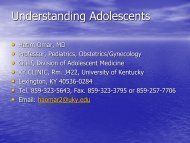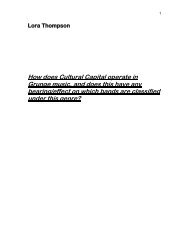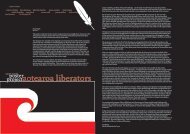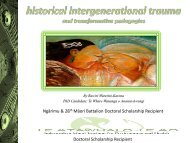Nursing Handover Research Project - Wintec Research Archive
Nursing Handover Research Project - Wintec Research Archive
Nursing Handover Research Project - Wintec Research Archive
You also want an ePaper? Increase the reach of your titles
YUMPU automatically turns print PDFs into web optimized ePapers that Google loves.
Sentinel events<br />
“When information is missed in patient handovers, people die” (Wilson, 2007, p.201).<br />
There is a strong construction of error leading to adverse advents in the texts. Errors in<br />
patient care or negative patient outcomes can be attributed to poor communication of<br />
information during nursing handover (Johnson & Barach, 2009; McCann et al., 2007; Strople<br />
& Ottani, 2006). The texts use real life narratives of patient misfortune to tell the story of a<br />
poor handover (Wilson, 2007). Nurses come from an ethical stance to “above all do good”<br />
and “above all do no harm” (Johnstone, 2009, p.40, 42) to patients according to the principles<br />
of beneficence and maleficence so errors and sentinel events may be used to generate an<br />
emotive reaction.<br />
The texts directly link handover to sentinel events. In New South Wales, a clinical<br />
management root cause analysis of 300 incidents showed that many were attributed to poor<br />
communication and insufficient handover (ARCHI, 2010). It was recognised that shift to<br />
shift handover was one of ten types of handover that need to be assessed and evaluated<br />
(ARCHI). Another review in Australia showed poor communication as a causative factor in<br />
approximately 20-25 % of sentinel events (O’Connell et al., 2008).<br />
The Health and Disability Commissioner (HDC) report on a sentinel case in a New Zealand<br />
hospital where a 50 year old man died, highlighted serious failings in handover and<br />
communication (HDC, 2007). A further report (Seddon, 2007) in relation to this case also<br />
identified handover as an area that needed improvement and asked each DHB to respond by<br />
examining their handover practice acknowledging that national input into standardisation of<br />
nursing handover practices would be valuable. Seddon further noted the language used to<br />
respond and observed three types of thinking these were; great understanding of a safety<br />
culture and system thinking, surface use of a safety and quality culture but no depth to action<br />
plans and an individual blame culture.<br />
Sentinel events are linked to the broad category of communication in particular breakdowns<br />
in communication (ACSQH, 2009; Alvarado et al., 2006; Porteous et al., 2009) It has been<br />
noted that 70% of sentinel cases were due to breakdowns in communication (Joint<br />
Commission on Accreditation of Healthcare Organisations (JCAHO), 2003, cited in Alvarado<br />
16



